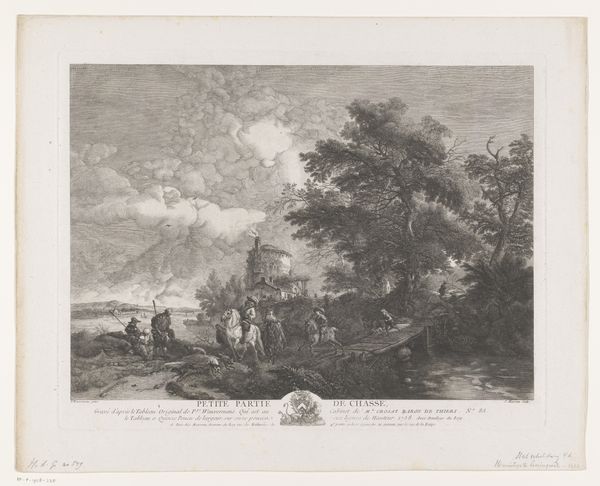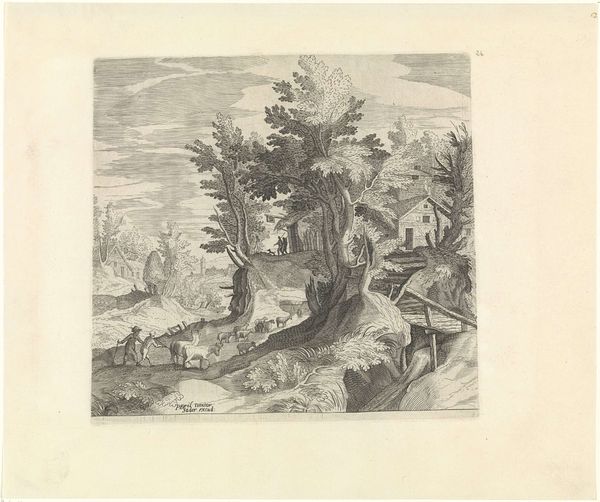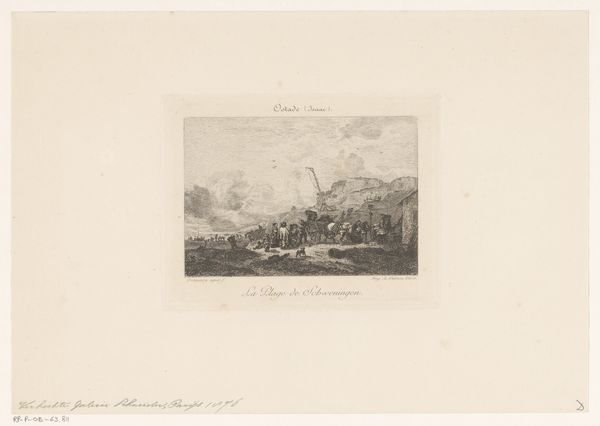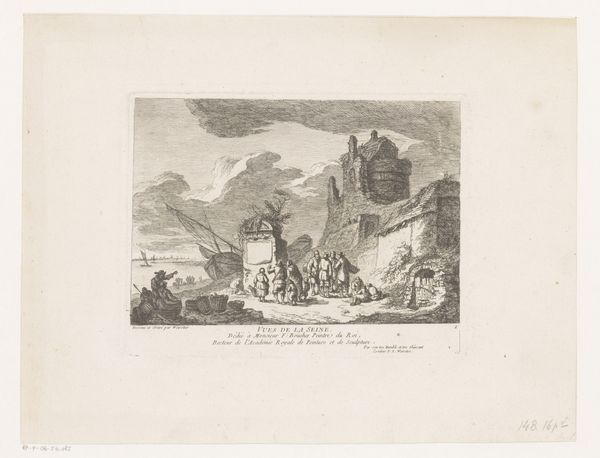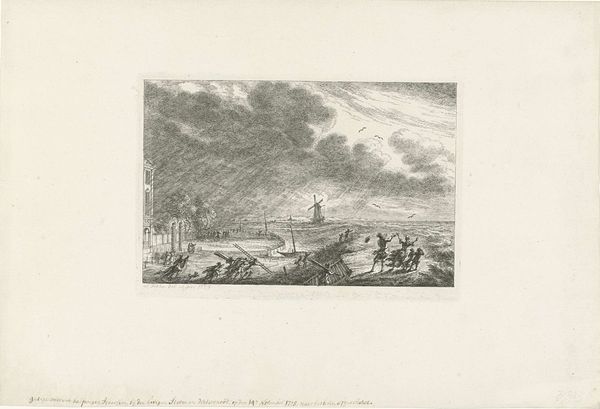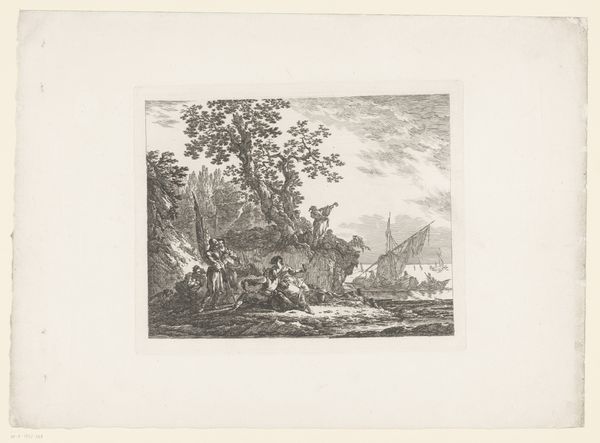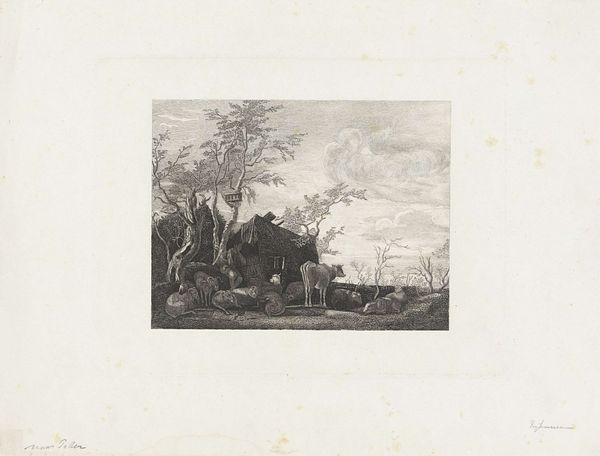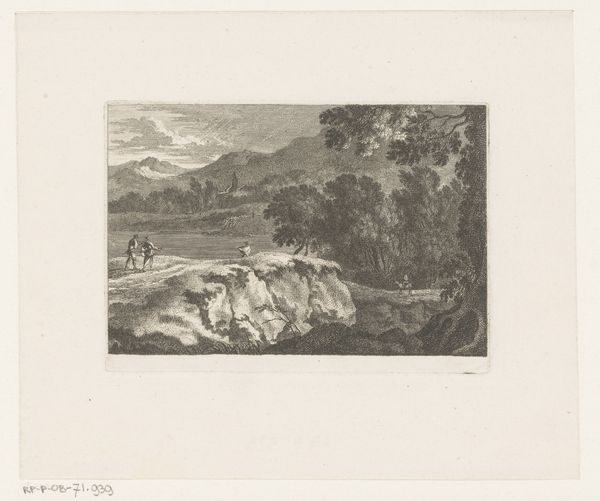
print, etching, engraving
# print
#
etching
#
landscape
#
line
#
cityscape
#
history-painting
#
engraving
Dimensions: height 127 mm, width 147 mm
Copyright: Rijks Museum: Open Domain
Editor: Here we have "The breakthrough of the Sint-Antoniesdijk at Houtewael, 1651," an engraving etched by Simon Fokke around 1780. The rushing water really gives the scene a sense of urgency and chaos. How would you interpret this dramatic moment captured on paper? Curator: It strikes me as a moment where humanity and nature collide, doesn't it? Fokke recreates this historical flood event using these incredibly delicate lines to portray an overwhelming force. Notice how the lines darken and become more frantic around the areas of greatest disruption. What does that tell us? Editor: That even in disaster, the artistry can direct our eyes, create focus. Was it common to represent events like these? Curator: Absolutely. Disaster prints were rather popular! They served as news reports of their time, shared narratives of survival and resilience but also carried moral undertones – a reminder of human vulnerability against the backdrop of nature's might. It almost feels… biblical in scale, doesn't it? A kind of test. And yet, there’s a calmness in the meticulous detail; it almost asks us to observe, to learn, rather than just panic. Do you see it too? Editor: I think so, especially now that you point it out. I hadn’t really considered that stillness. It’s a fascinating contrast! Curator: Indeed. Fokke, even a century later, seems to be encouraging reflection on the precarious balance we strike with the world around us. Every line tells a story of both destruction and perhaps, a new beginning. Editor: I never thought of it as a kind of “news report” before, but that makes so much sense!
Comments
No comments
Be the first to comment and join the conversation on the ultimate creative platform.


